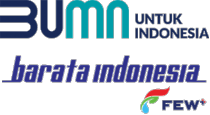New Developments Make Indonesia a "Must Compete" Market for In Vitro Diagnostic Companies
ROCKVILLE, Md., July 26, 2017 /PRNewswire/ -- Indonesia offers compelling opportunities for companies targeting healthcare markets in Southeast Asia. The number of people with household expenditure exceeding $200 per month is expected to reach 141 million by 2020 (from 74 million in 2013). Life expectancy has also gone up and child mortality rates have declined significantly. The country is seeing a fundamental demographic shift in terms of increasing young, working population. The government declared Universal healthcare coverage (UHC) program that intends to cover 100% of its population by 2019. Kalorama details the market in its report, Indonesia IVD Market Analysis.
"To begin with, the country's 260 million plus population is too big to ignore," said Dr. Syamala Ariyanchira of Kulal Lumpur-based AcuBiz, who authored the study for Kalorama. "GDP of the country is increasing year to year since 2014. The country has a fast growing middle class population. And then the new government plan was instrumental in generating a new wave of investments in both government sector and private sector."
The government is investing heavily to equip Community Health Centres (CHCs, which are locally known as Puskesmas) with advanced healthcare facilities. Budget allocated by the government for IVDs in government hospitals and CHCs has increased significantly. Many CHCs are being converted into small hospitals with inpatient facilities. The government focus on improving healthcare status of the country is offering tremendous opportunities for several healthcare industry segments including pharmaceutical, medical devices, diagnostics, and healthcare services industries. This is also influencing the demand for in vitro diagnostics (IVD) positively. Indonesia's demand for IVD is estimated to be around $233 million in 2017. This is expected to grow at a compound average growth rate (CAGR) of 8.6% to reach $353 million by 2022. Leading market segments within IVD market are Microbiology, Hematology, Clinical chemistry, and point-of-care (POC) diagnostics.
Along with disposable income of the population and rising number of young people opting for corporate jobs, incidence and prevalence of life style diseases such as cancer and cardiac diseases have increased. Indonesia also has high prevalence of infectious diseases such as malaria, dengue, typhoid, HIV, and TB. Due to high prevalence of diabetes, associated health conditions are also a major concern. Fast and accurate diagnosis of various medical conditions is vital, but unfortunately it is yet to become accessible and affordable for majority of Indonesian population. Many CHCs in urban areas are currently able to offer diagnosis using clinical chemistry, immunoassay, hematology and POC instruments. Demand for POC devices, in particular, is expected to grow as they are more affordable and easy to use. There is an acute gap in the number of skilled healthcare professionals capable of conducting advanced IVD tests and interpreting results.
Unit shipments are expected to grow at faster pace than revenues in Indonesia's IVD market. One of the key limiting factors for revenue growth is the government's policy to replace tender-based bulk purchases by government institutions with E-procurement system.
"E-procurement of IVD products is done through the e-catalogue, where all products registered with Indonesia's MOH need to be listed," Ariyanchira said. "E-catalogue prices need to be the lowest for a particular product in the country. No company can sell their product at lower prices than the price registered for the product in the E-catalogue price, as it is mandatory for all government organizations to purchase through e-catalogue."
Kalorama notes that this is not all downside for international market participants; the move is a major step towards controlling corruption in tender processes, manufacturers and distributors are concerned about making prices public. E-catalogue prices have become the starting point for negotiation for private sector even though they are not allowed to use e-catalogue for their purchases. This impacts revenues and overall profit margins for vendors. As a result, even though demand by volume is growing in double digits, revenue growth is relatively slower.
Kalorama Information's report, Indonesia IVD Market Analysis contains segment markets for various types of testing products sold in Indonesian Markets, and discusses company performance in this important region. The report can be found at: https://www.kaloramainformation.com/Indonesia-IVD-11000705/.
About Kalorama Information
Kalorama Information, a division of MarketResearch.com, supplies the latest in independent medical market research in diagnostics, biotech, pharmaceuticals, medical devices and healthcare; as well as a full range of custom research services. Reports can be purchased through Kalorama's website and are also available on www.marketresearch.com and www.profound.com.
We routinely assist the media with healthcare topics. Follow us on Twitter, LinkedIn and our blog on our company website.
Please link any media or news references to our reports or data to http://www.kaloramainformation.com/.
Press Contact:
Bruce Carlson
212 807 2262
bcarlson@marketresearch.com
View original content with multimedia:http://www.prnewswire.com/news-releases/new-developments-make-indonesia-a-must-compete-market-for-in-vitro-diagnostic-companies-300494791.html
SOURCE Kalorama Information





